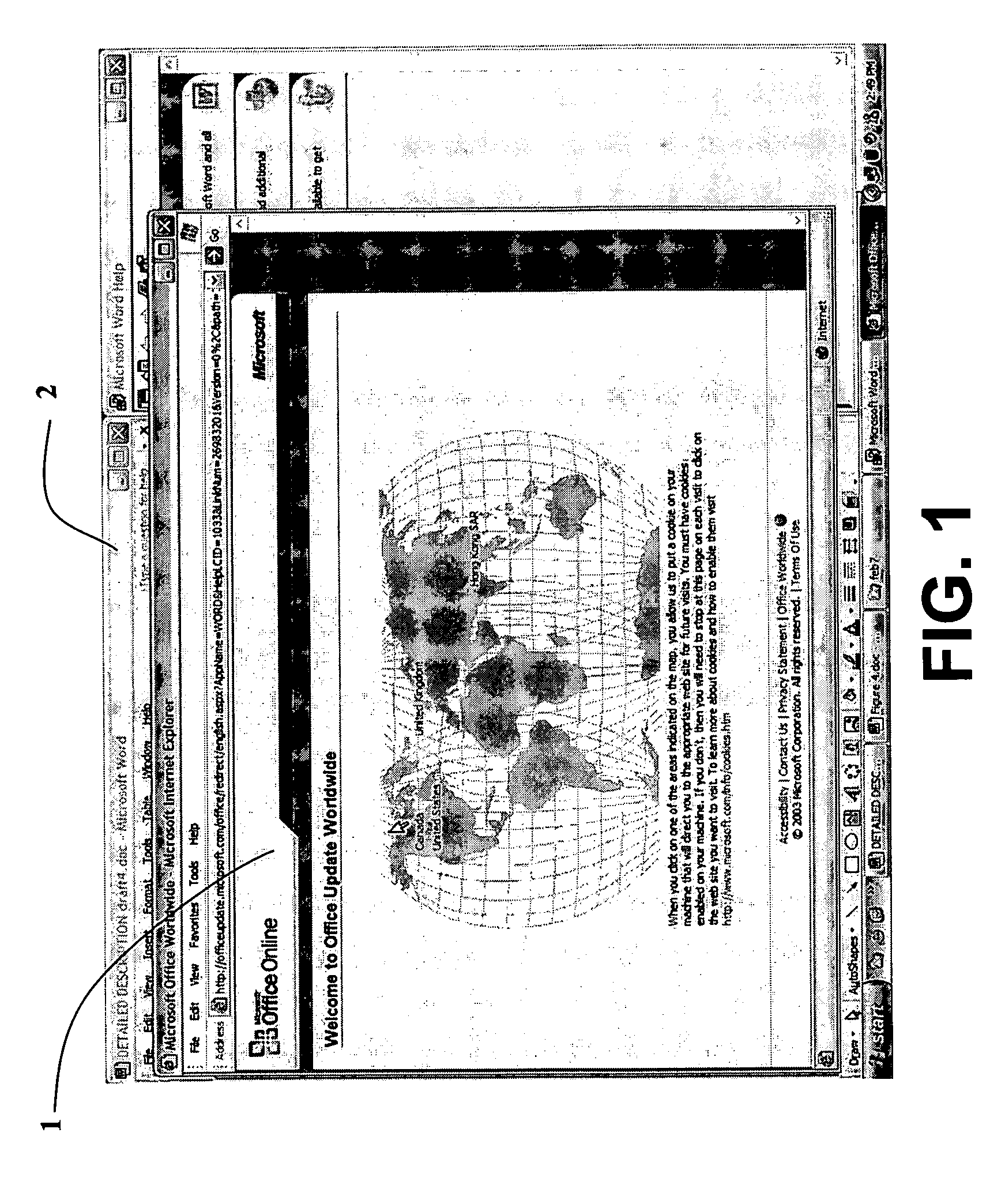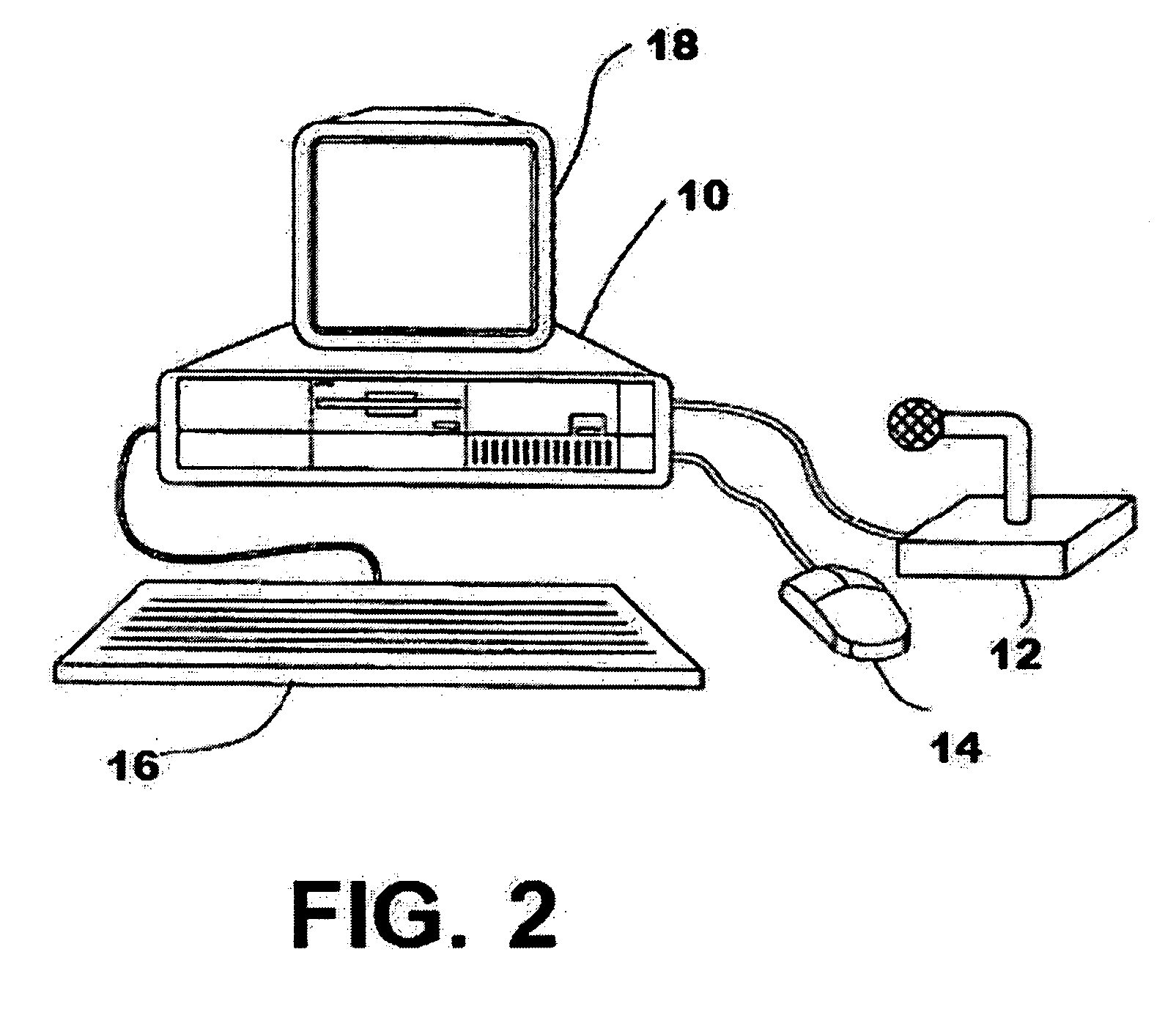Voice activated system and methods to enable a computer user working in a first graphical application window to display and control on-screen help, internet, and other information content in a second graphical application window
a technology of voice activation system and graphical application window, which is applied in the direction of instruments, point operation from vehicles, transportation and packaging, etc., can solve the problems of easily creating frustration for users, interrupting users' attention, and often awkward windows
- Summary
- Abstract
- Description
- Claims
- Application Information
AI Technical Summary
Benefits of technology
Problems solved by technology
Method used
Image
Examples
Embodiment Construction
[0052] The present invention, generally, provides a speech interface giving a computer user increased access to, control of, and usability of online help, and other types of information content. First, a description of the computer hardware and software requirements is provided. Next, the basic windowing concepts used by the invention is described. Next, a brief description about voice recognition command files is provided. And last, the preferred embodiment is described in detail.
[0053] The present invention shall be described with respect to a Windows based operating system and ScanSoft's Dragon NaturallySpeaking product. However, the invention as disclosed herein is not so limited. Instead, the invention can be used with most voice recognition systems, including IBM ViaVoice, Microsoft Speak and with SDK's available from most vendors of speech recognition engines. The invention is designed to operate with any one of several commercially available operating systems, which incorpo...
PUM
 Login to View More
Login to View More Abstract
Description
Claims
Application Information
 Login to View More
Login to View More - R&D
- Intellectual Property
- Life Sciences
- Materials
- Tech Scout
- Unparalleled Data Quality
- Higher Quality Content
- 60% Fewer Hallucinations
Browse by: Latest US Patents, China's latest patents, Technical Efficacy Thesaurus, Application Domain, Technology Topic, Popular Technical Reports.
© 2025 PatSnap. All rights reserved.Legal|Privacy policy|Modern Slavery Act Transparency Statement|Sitemap|About US| Contact US: help@patsnap.com



